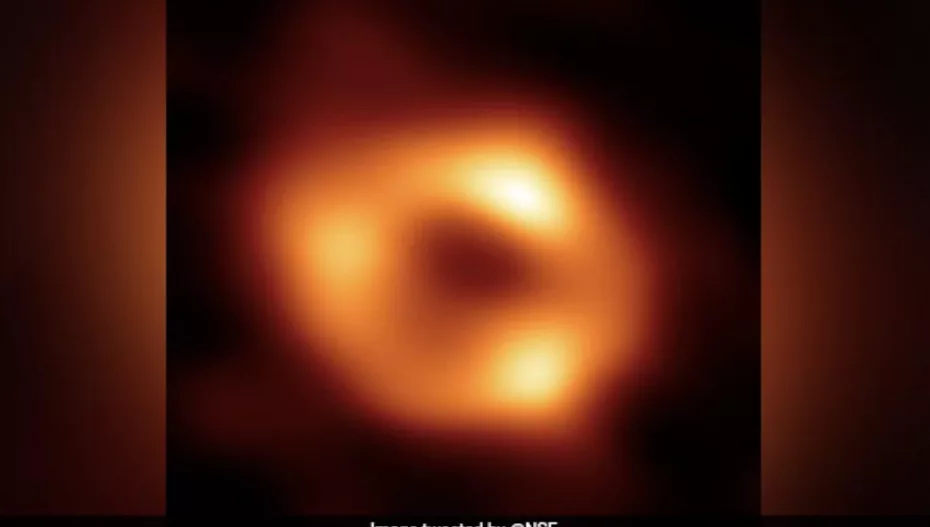A doughnut-shaped image of a supermassive black hole lurking at the centre of our Milky Way galaxy was released by the astronomers of the National Science Foundation (NSF) on Thursday. This is the first-ever image of this Sagittarius A* or SgrA* black hole.
The photo shows a doughnut-shaped dark and silent space filled with radio emissions. The black hole cannot be seen because even light can’t escape its strong gravitational pull. The diameter of Sagittarius A* is about 17 times that of the Sun, the astronomers explained.
The discovery was announced by National Science Foundation (NSF), an independent agency of the US government.
“Our own black hole! Astronomers have just revealed the 1st image of the supermassive black hole at the center of our Milky Way galaxy using the @ehtelescope – a planet-scale array of radio telescopes that emerged from decades of NSF support,” NSF tweeted.
The black hole – called Sagittarius A, or SgrA – is only the second one ever to be imaged. The feat was accomplished by the same Event Horizon Telescope (EHT) international collaboration that in 2019 unveiled the first-ever photo of a black hole – that one residing at the heart of a different galaxy.
American space agency NASA congratulated NSF on the discovery.
“Congratulations to the @ehtelescope team on capturing the first image of Sagittarius A*, the black hole at the center of our galaxy!” a tweet from NASA said.
Sagittarius A* possesses four million times the mass of our Sun and is located about 26,000 light-years – the distance light travels in a year, 5.9 trillion miles (9.5 trillion km) – from Earth.
Black holes are extraordinarily dense objects with gravity so strong that not even light can escape, making viewing them quite challenging. A black hole’s event horizon is the point of no return beyond which anything – stars, planets, gas, dust and all forms of electromagnetic radiation – gets dragged into oblivion.












